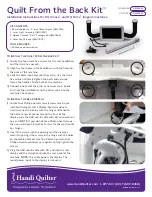Reviews:
No comments
Related manuals for Rotary 1202

FAX-JX500
Brand: Canon Pages: 2

HQ Amara
Brand: handi quilter Pages: 2

GARUDAN GF-1107-147 MH
Brand: Anita Pages: 73

9900 Els
Brand: Gamma Pages: 32

GC24698-BLHL
Brand: HIGHLEAD Pages: 35

14U 32A
Brand: Singer Pages: 24

07104A
Brand: American Sanders Pages: 77

HCH Series
Brand: Happy Pages: 2

KM 150/500 R D 4W
Brand: Kärcher Pages: 420

MCS-1500
Brand: JUKI Pages: 40

M19 Series
Brand: DeLuxe Stitcher Pages: 48

Aria Quilting & Sewing Machine
Brand: Baby Lock Pages: 2

56416700
Brand: Nilfisk-Advance Pages: 54

C210
Brand: GBC Pages: 38

AMS-221ENTS
Brand: JUKI Pages: 135

DLN-9010
Brand: JUKI Pages: 100

KX-PW30CL
Brand: Panasonic Pages: 12

KX-PW308DL
Brand: Panasonic Pages: 20

















